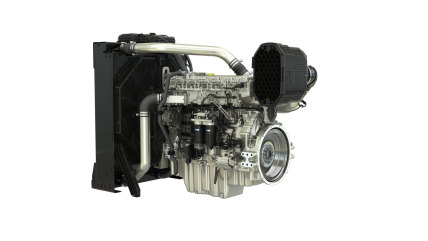
Perkins has announced the development and launch of its 13 litre Series 2600 diesel unit, designated 2606, optimised and purpose-built for electric power generation applications. Available in the second half of 2025, the new engine is said to offer excellent load acceptance, fuel efficiency and versatility.
Initially available for use in lesser and currently non-regulated stationary territories, this 13-litre, six-cylinder engine builds on the power density and fuel efficiency of the industrial Perkins 2600 Series platform announced last year.
To date, engineers have completed more than 30 000 hours of design validation and have more than 120 patents granted or pending, across the entire 2600 Series engine platform. The 2606 model is scheduled for commercial production in the second half of 2025. It delivers 321-523 kW of prime power, and 365-572 kW in standby applications.
The engine is said to provide flexibility by switching easily between 50 and 60 Hz and across a range of voltages, enabling one generator set to satisfy requirements in diverse regions and applications. It is designed to be ideally suited to the power demands of critical applications, data centres, power plants, and industrial buildings, among other installations, for example, in prime power applications such as those found in remote worksites.
The 2606 is designed to perform at altitudes of up to 3500 metres, and in extreme ambient temperatures as high as 60 C (140 F), and as low as minus 40 C (minus 40 F) with suitable aids.
It is described as supporting quality, reliability, and easier maintenance through numerous design enhancements, including the integration of components and a reduction in the number of leak joints by more than 45%. Together, the upgrades are expected to result in low fluids consumption and extended oil and fuel filter service intervals as long as 1000 hours.
The engine is compatible with renewable liquid fuels such as 100% hydro-treated vegetable oils (HVO), B100 distilled biodiesel, and up to B100 fatty acid methyl ester (FAME) standard biodiesel. In addition, the engine’s core architecture supports the future development of spark-ignited natural-gas and hydrogen fuel capabilities.






